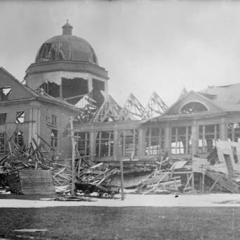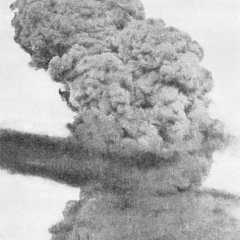Battles & Incidents
6th December 1917
The worst disaster you’ve never heard of
In early December 1917 a convoy was assembling in Halifax, Nova Scotia, ready to sail to Plymouth with supplies for the British war effort. At 8.45am on 6th December, two ships collided in the harbour. One of them, the French freighter SS Mont Blanc, was carrying 250 tons of TNT and 2,300 tons of picric acid, a highly unstable ingredient of military explosive.
After the collision, Mont Blanc caught fire and the crew abandoned ship. As the ship drifted across the harbour, thousands of people gathered to watch. At 9.05am the Mont Blanc exploded, causing the biggest man-made explosion prior to the atomic bomb.
In all, 2,000 people were killed, 9,000 injured, and 1,600 buildings were destroyed. All buildings were flattened over an area of 325 acres, and 6,000 people were made homeless.A piece of the Mont Blanc’s anchor weighing 1,140lbs was found two miles away. The explosion caused a tidal wave which swept across the harbour and into the city of Halifax.
A relief train was sent from the United States, with doctors, nurses and essential supplies, and in Boston over half a million dollars were raised to help the survivors. Today, the Province of Nova Scotia still sends a giant Christmas tree each year to the city of Boston as a token of gratitude for the help given after the explosion.
Reginald Perry from Beer (see separate panel) was on board the Royal Navy cruiser HMS Highflyer which was in Halifax harbour at the time of the explosion, and whose second in command, together with a number of the crew, were killed while attempting to reach the Mont Blanc in the Highflyer’s whaler after the French crew abandoned ship.


